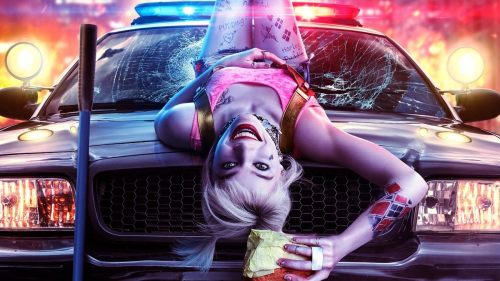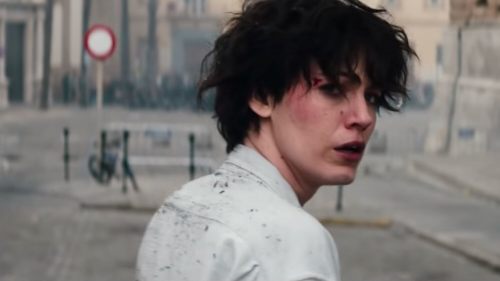MINIONS Review: Almost A Good Movie About Screeching Bananas
As the lights begin to dim, sitting in a theatre amongst dozens of parents and as many children tends to be a moment of calibration. As trailer after trailer of dumb comedy rolls by, you get a sense of what to expect from the little ones populating the seating space around you. Watching animated movies surrounded by kids is an interesting and often joyous experience, even if it means having to put up with the trailer for the fourth Alvin and the Chipmunks movie, because it means hearing innocent laughter from those young enough to enjoy weirdly shaped characters falling down or hitting each other over the head, but not yet old enough to understand tongue-in-cheek jokes about those characters being sexualized, or the odd inexplicable racist gag. If the metric for success in animation aimed purely at children is how much they laugh, or how much of their laughter is at cartoon violence and silly noises as opposed to the few instances of jokes slightly more insidious, then I suppose Minions fulfills its ultimate purpose. Admittedly, it’s a lot of fun! But it’s also a lot of squandered potential, which is unfortunate for a movie that spent wealth of a small nation on its marketing.
The (over)exposure of the Minion characters began in the wake of the first Despicable Me, back when the target audience for this new spin-off were merely zygotes. Fluent in the dialects of gibberish and fart guns, their post-sequel popularity led to them getting their own movie where they occasionally speak Spanish. It’s a weird concept to begin with, as it attempts to individualize members of a group intended to be nothing more than an amorphous collective. Minions begins with the long history of Gru’s henchmen, going all the way back to the dinosaurs and showing them to be born followers, albeit it somewhat clumsy ones. They’re genetically predisposed to finding and following the most despicable villains and latching on to them as leaders, but be it a T-Rex, an Egyptian Pharaoh or Count Dracula, they inevitably end up killing them by accident. The group of Minions that we see emerge from the Ocean are the some ones we follow for millions of years, the implication being that they’re essentially immortal, and if they go too long without an evil leader telling them what to do, they get horribly depressed. That’s a bizarre set up, but it seems to be the only one that makes any logical sense if we know exactly where these creatures end up. The film takes place largely in the 1960s, and thankfully, the Minions are shown to have established their own society after the battle of Waterloo, which avoids the question of who they would’ve aligned themselves with during the first half of the 20th century. Phew! They now live in an ice settlement near what appears to be the North Pole, but is also close to Australia. The Geography doesn’t seem to matter, at one point they jump from Australia to India in a single leap, leading to an unnecessarily stereotypical 20 second dance sequence that serves no purpose other than to look silly. That being said, the film does make a genuine effort to tell a story, but whether or not it succeeds is a different matter.
The Minions, all seemingly male and with anglicized names for convenience, I suppose, look to Kevin as their new leader. His goal? To…. find a new leader. He’s the tall one with two eyes, and he enlists the help of nonchalant musician Stuart, who doesn’t seem to know why he’s tagging along. He’s the medium sized one with a single eye. Finally, Kevin reluctantly lets Bob come too, because no else will volunteer. He’s the short, annoying one with two heterochromic eyes, but it doesn’t really matter who looks like what, because despite the film’s efforts to give them their own individual narratives, they all end up doing pretty much the same thing, and reacting to everything the same way. The only way to tell them apart is often when they’re given some sort of external reflection, either metaphorically (they watch three dating show contestants who each share their names and supposed traits) or literally, like when Bob comes across a house of mirrors and gets excited because he’s found Minions that look like him. There are similar hints of who these characters are and what they really want, but the ideas never really come up again.
Kevin wants to lead, but he’s constantly letting other people do it instead. In fact, his entire goal is contradictory to who he is. Stuart appears laid back at times, but he has no problem springing into action alongside the others. And Bob is a well-meaning idiot who wants people to like him, but when he gets exactly what he wants – a section of the film where he accidentally becomes the King of England – he doesn’t mind giving it up. That section, along with several others in the film, is actually quite silly and entertaining. The fun bits are fun, usually because of the non-Minion characters (of which there are several), but its attempts at crafting a narrative that treats the Minions as individual people is almost self-defeating, because individuality is simply not in their nature, both in the world of the film, as well as how we as audiences perceive them.
Still, despite its inherent contradictions that weigh it down like a shackle, it’s a mildly fun ride when it’s not trying to be serious. The trio arrives in New York in the late 1960s, and amidst all the political mayhem of the era (the scenes are populated with Vietnam protesters, and the billboards with political messages) their main goal is simply to find the worst possible person. The story avoids any sort of politicization by having them stumble upon something called Villain Con (quite fitting for a film releasing during SDCC), and they get word of one Scarlett Overkill (Sandra Bullock), a mysterious villainess set to appear at the convention. On their way to the Con, they come across a well-to-do family who themselves turn out to be villainous bank robbers as the film veers temporarily into action territory, and the venue itself is perhaps the film’s best visual joke. Villain Con is exactly what it sounds like, a gathering of evil geniuses in the vein of a comicbook convention, down to the exhausting booths and the tireless excitement of the cosplayers. The main event (taking place in “Hall H”!) is the public appearance of Scarlett Overkill herself, the world’s first female supervillain. She kicks ass with her weird gadgets, proving herself to be head and shoulders above her male counterparts, and she inadvertently recruits the Minions to steal the Crown Jewels in England.
There’s nothing driving the decision to set the film in the '60s other than the fact that this movie is a prequel, though I suppose seeing a character voiced by Jon Hamm fawn over a painting of a soup can has its own charm (for about 8% of the audience anyway) and there’s a Moon Landing joke in there that’s bound to get a few laughs, but it definitely isn’t a film that uses the time period in any specific way. You could very well set it in 2015 or not specify the year and it would’ve been more or less the same movie, though perhaps that’s not a point to really harp on. After all, it does hit whatever silly beats it needs to in order to get a laugh out of those still learning to count. The three Minions are given various supervillain gadgets that actually managed to help differentiate them for a few minutes, and it reaches some interesting highs in terms of the plot and the related laughs when the trio take over Buckingham Palace, though it’s all immediately undone when Scarlett Overkill and her husband take control of their own villainous scheme, something they could’ve really done in the first place.
At times, the film even feels like a parent’s waking nightmare, with the Minions taking over the British Monarchy before a climactic scene where Kevin accidentally weaponizes himself and grows twice the size of a skyscaper. A gigantic Minion roams the streets of London and protects the other Minions (hundreds of which have now shown up!) from a villain who’s grown to resent Minions as a concept. They’ve become so huge and widespread that they’re an annoyance, but they simply won’t go away. Sound familiar?
Its attempt meta-narrative doesn’t really stop it from growing stale as a story, however, and there’s not even that much falling down during the climax (the scale by which Minions media ought to be measured at this point) and it has a victorious ending for the three main characters that feels quite unearned. It sort of reaches the logical endpoint for two of characters, Kevin having become a leader or sorts, and Bob having gained a bit of recognition (I’m still not sure what Stuart’s deal was), but nothing in between where they start and where they end up feels like substantial connective tissue. Sure, it’s a silly children’s film about anthropomorphic earplugs hitting each other and making cackling noises, but in its attempt to make those bizarre things beings seem heroic and even relatable, it doesn’t do a particularly good job.
I hate to say this, but perhaps it would’ve been better off if it really was just an hour and a half of slapstick humor and cheap visual gags. It would’ve certainly saved the embarrassment of having contemplative and personal moments for the characters that pop up out of nowhere without much meaning or context. But hey, like I said, kids were laughing for at least 75% of it, so all things considered, it could’ve been much worse.



